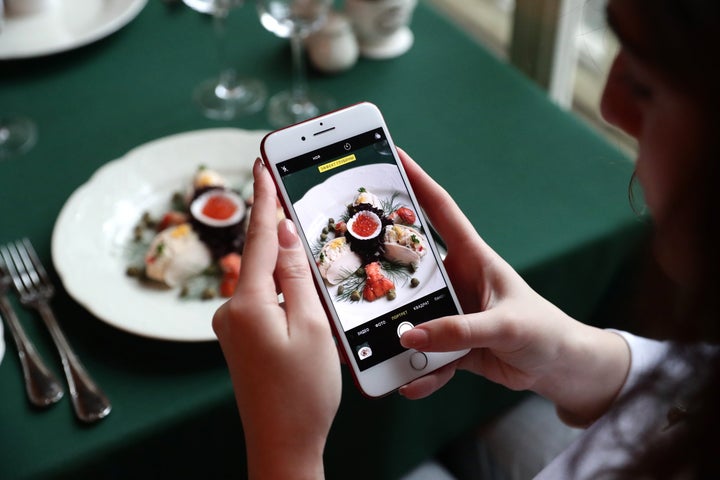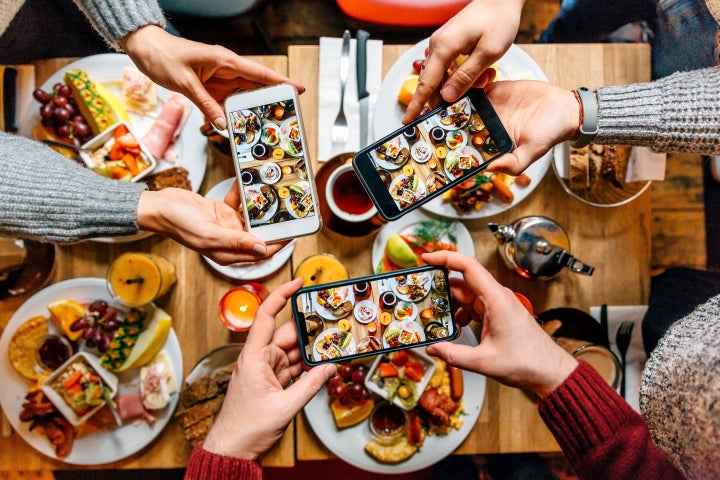
Once upon a time, not so long ago, food blogging was something of a vocation. A calling to shepherd the uninitiated towards the best Kolkata biryani in town, to convert misguided lovers of McAloo tikkis, to enlighten people about the little-known pleasures of Naga cuisine. Today, though, food blogging is a veritable business and everyone, including the guy taking candid shots of his congealing chhola-bhatura at the next table, wants in. There are takers too. The food and beverage industry has over the years increasingly sought to leverage the reach of food bloggers, many of whom are not just fixtures at restaurant openings but also actively work with establishments to connect with prospective customers.
According to Anand Nair, general manager at the InterContinental Chennai Mahabalipuram, the last 10 years have seen bloggers “evolving” into influencers. “They have diversified from a single platform like Blogspot and gone on to disseminating their content across other social media channels,” he says.
“Back in 2009, food blogging was fairly nascent and brands didn’t consider making blogs part of marketing plans and channels. It was only later that fraternities like the Food Bloggers Association of India, Zomato, burrp!Club and Foodtalk streamlined the blogging scenario in India by creating a value proposition for bloggers and brands alike.”
But what exactly has this “value proposition” translated to, for all players? Has the F&B industry benefited, in terms of measurables such as increased bookings? At the same time, to what extent has blogging been reduced to ‘paid reviews’? What does this mutual back-scratching do to a blogger’s credibility, and the audience’s likelihood of actually being ‘influenced’?
‘A measurable impact’
Restaurateur Ashish Dev Kapur, the man behind restaurants such as The Kimono Club in Delhi, The Wine Company and Whisky Samba, believes that bloggers have made a “measurable impact” in promoting his businesses. “While we can’t give an exact number in terms of bookings, we have seen higher footfalls when popular bloggers and writers have talked about the restaurant.” With the top tier of eateries working to introduce regional cuisines and sometimes, new dishes, restaurateurs are seeking bloggers who have the knowledge to educate their audience with posts or long captions, rather than just dish names and a great photograph.
Pramod Kumar, marketing head of Loft, a Zee5 experience explained how hosting fan meet and greet events of influencers gradually increased footfall over 2019.
Most restaurants HuffPost India spoke to said that a part of their marketing budget is reserved for hosting food bloggers. While in some cases restaurants ‘host’ a content creator for an event where they give the person space for free and also provide food and drinks to the guests invited to the event for free, others involve paying for posts they out up on their social media feeds.
“People within the industry now use the terms blogger and influencer almost interchangeably, as the lines between the two have blurred”
Shreya Soni, founder of the capital’s lifestyle platform Delhi Secret Supper Club, works with brands and restaurants to help put together one-off events and experiences, said, “Brands have been actively tapping into the ‘influence of the influencer’, and discovering how to manoeuvre around it.” This includes re-engineering prevailing perceptions of certain eateries. The marketing manager of a Mumbai-based eatery who did not want to be named seemed to endorse Soni’s opinion and added that she began working with bloggers after she realised they appealed to a younger customer case, which would traditionally not always choose a five-star to dine out.
People within the industry now use the terms blogger and influencer almost interchangeably, as the lines between the two have blurred. Some restaurants, especially those with multiple franchises across a city or country, believe that enlisting food bloggers is a great way to stay part of the conversation, as traditional media, with limited newsprint, is less likely to cover each new outlet launch or new menu roll out.
But there are some undesirable side effects—for restaurants as well as the audience—as bloggers (or influencers) have moved from critiquing establishments to working with them.
All sugar, no spice
Towards the end of the decade, it seemed like every second person seemed to be a ‘food blogger’, which often translated to just photos taken for social media. The first wave of discerning, interested bloggers gave way to those looking to make it a career with minimum engagement with food. As a result, Instagram feeds were soon saturated with those seeking to find validation, either in the form of invites from restaurants or a large follower count.
In conversations for this article, PR professionals who didn’t want to be quoted complained about how a majority of bloggers don’t engage with the food, but instead seem to prefer to use the cultural cachet that comes with being invited to dine out to impress friends. Very few posts will actually describe how that Instagram-friendly freakshake really tastes, or whether that pile of hot ribs is worth the cost.

It wasn’t always that way. Back when Blogger and Wordpress were the most social parts of the internet, regular people with a passion for food dedicated themselves to trumpeting the hidden gems they’d stumbled upon, and gave detailed accounts of their dining experiences at restaurants ranging from neighbourhood favourites to beloved institutions.
According to Radhika Mishra, an independent public relations consultant who works with restaurants such as The Bombay Canteen in Mumbai, Toast and Tonic in Bengaluru and Kappa Chakka Kandhari in Chennai to name a few, some of the people in the first generation of bloggers went on to monetise their expertise by writing for mainstream media, but continued to use their own blogs to shine a spotlight on local foods and restaurants that are often overlooked.
“When it comes to feedback today, most restaurateurs admit they don’t look to bloggers for it, because it’s hard to be critical, even constructively, after being invited for a meal at the expense of the brand”
Shuchir Suri, the founder of Food Talk India, explains how in the early days of Facebook and Instagram, restaurateurs looked to food blogs as a source of credible feedback. “Owners [of restaurants] were looking to engage with consumers,” he says, and blogs allowed those outside the industry to share their thoughts. When it comes to feedback today, most restaurateurs admit they don’t look to bloggers for it, because it’s hard to be critical, even constructively, after being invited for a meal at the expense of the brand. Suri is now working with restaurants to put together events around “experiential dining” to help create the kinds of memorable meals that translate well on social media and generate a buzz via word of mouth.
However, some consumers view the symbiotic relationship between restaurants and content creators with some distrust. Arjun Rai Jain, a food enthusiast and entrepreneur in the food processing industry enjoys trying new restaurants. He says, “I don’t usually use Zomato or Instagram for restaurant recommendations… I find Instagram to be too curated. I’ve never really felt you see an accurate representation of the food.”
Calling for quality
Food writer and author Vir Sanghvi believes that social media influencers can “make a difference to public taste” but questions the quality of such content creators in the Indian food space.
“In the case of fashion, influencers are nearly as powerful as Vogue. Something like that is happening globally in the food space, though so far it is not as important to restaurants as it is to designers. India cannot be an exception to global trends so it is certain to happen here one day. But that day has yet to dawn. What we are seeing is an early version of the trend… influencers of note have yet to emerge,” says Sanghvi.
He adds, “There are too many people with fake followers and very little influence. The influencer marketing bubble is helped along by lazy agencies who take money from clients and then spend it on their pet influencers. The client gets no benefit but it is easy to convince him otherwise in the short run.”
Several people in the F&B industry also have their misgivings. Rahul Leekha, director at Coffee by Di Bella, which has 25 outlets across Mumbai, agrees that bloggers are “an integral part of the whole eco-system”, but believes that over time their impact has become “diluted”. He says, “We don’t do blogger invites very aggressively to be honest.”
AD Singh, the founder of the Olive Group, with multiple restaurants all over India, does not mince words: “The huge amount of food blogging on Instagram has turned the conversation around food into a cacophony and you have to sift hard to remove the phony from it.”
Singh like a few others HuffPost India spoke to said they are again falling back on traditional media and food writers doing reviews, considering most of that content is available online as well.
One way to get around this, believes Soni, is for brands to choose collaborators very carefully. “If you do your due diligence and homework about what kind of a value set matches with your brand, service, story, event, whatever, it’s fantastic. Those that are basing [choice of influencer] on the sole criterion of the number of followers are also the brands that end up burning their fingers and then complaining about it.”
For the latest news and more, follow HuffPost India on Twitter, Facebook, and subscribe to our newsletter.